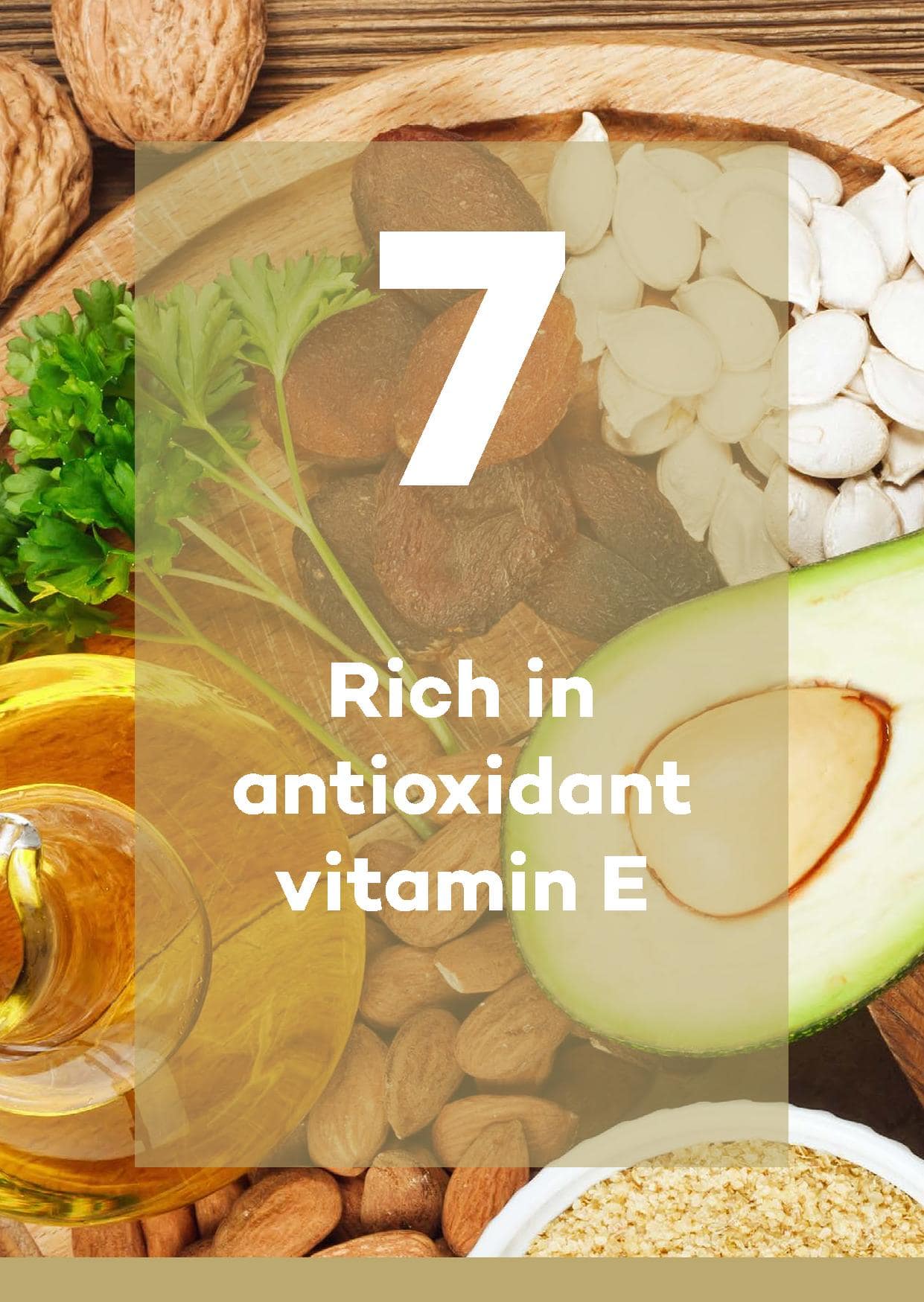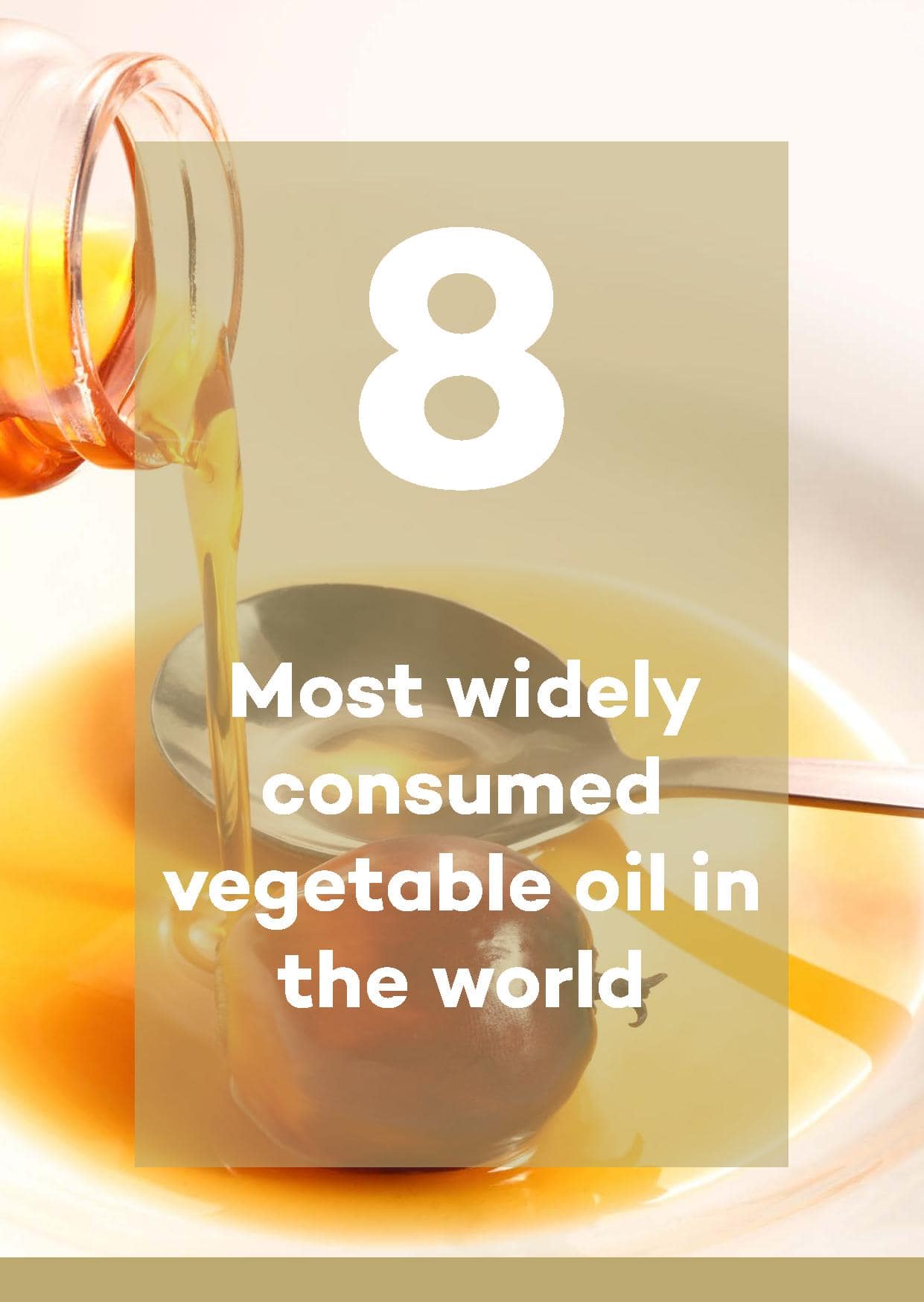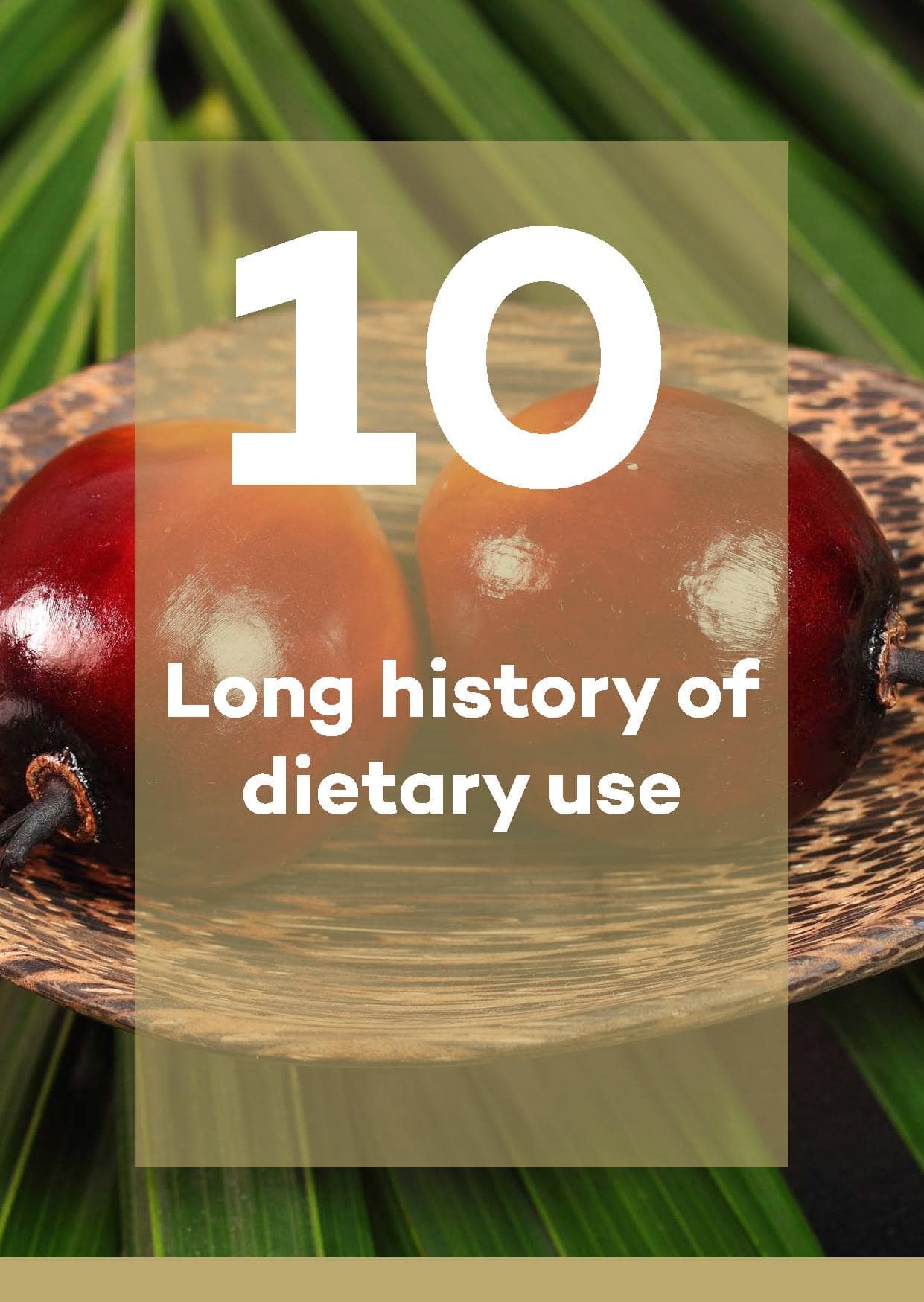
Trans fatty acids have been proven to have detrimental effects on health. These compounds are formed when a liquid oil is made (more) solid.
Having a unique and balanced composition of saturated and unsaturated fatty acids, palm oil generally does not require partial hydrogenation (‘hardening’) in applications where solid fat is desirable, thus avoiding the formation of trans fatty acids. Palm oil has become a favourite ingredient for these applications.
Using palm oil instead of partially hydrogenated vegetable oils reduces the content of trans fats in foods made with these oils. No other vegetable fat with a semi-solid texture at room temperature and providing the same features exists in sufficient quantity. The EU has issued legislation to set a maximum of 2% trans as a legal limit.

Crude or unrefined palm oil contains 60 to 100 mg vitamin E per 100 gram. An average of 50 to 65% of the vitamin E content remains after refining, which is still higher than in other refined vegetable oils.
70% of the vitamin E in palm oil occurs as tocotrienols. In contrast, other vegetable oils such as corn, olive, soybean, and sunflower, are good sources of tocopherols but contain no tocotrienols.
Current research suggests unique biological properties of tocotrienols and warrants further investigation.


Global production of palm oil rose from 14.6 million tons in 1995 to over 70 million tons in 2020 with over 2/3 destined to food. Palm oil is currently the most consumed vegetable oil in the world. The main palm oil consuming markets are China, India, Indonesia and the European Union. The big advantage of palm oil is, that it uses less land than any other oil crop.
Palm oil consumption levels were estimated by CREDOC in France in 2013. On average, the French (≥3 years of age) consume 2.8 gram of palm oil per day, which corresponds to approximately 4% of the overall saturated fat intake in adults.
In 2020 a study was done on the intake of palm oil in both Spain and Germany.7 The mean intake in Spain is estimated to vary between 2.06 and 4.54 g/day and in Germany between 3.06 and 6,22 g/day.

Carotenoids are natural pigments responsible for the red-orange colour of crude palm oil. 100 Gram of crude palm oil contains 50 to 70 mg carotenoids. These are mainly beta carotene (56%) and alpha carotene (35%) and are the same compounds that give the orange colour to carrots, pumpkin and sweet potatoes.
Carotenoids act as precursors of vitamin A, which plays an important role in good vision, a healthy immune system and cell growth. The pro vitamin A (retinol) equivalent content of crude palm oil has been estimated at 15 times that of carrots.
Standard oil refining removes all carotenoids, but about 80% of these valuable components are retained in a product called ‘red palm oil’, resulting from a modified refining procedure. Red palm oil is used for the treatment and prevention of vitamin A deficiency in many countries worldwide.

The oil palm is an ancient tropical plant from the West African tropical rainforest region. The use of palm oil in human nutrition dates back thousands of years. In the late 1800s, archeologists discovered a substance that they concluded was palm oil in a tomb at Abydos dating back to 3000 BCE.
Palm oil is traditionally used as a cooking ingredient in the tropical belt of West Africa, South East Asia and Brazil.
Download the booklet